

Catalyst Directory




A Vibrant Way of Life
The Sustainable Southeast Partnership (SSP) is a dynamic collective uniting diverse skills and perspectives to strengthen cultural, ecological, and economic resilience across Southeast Alaska.

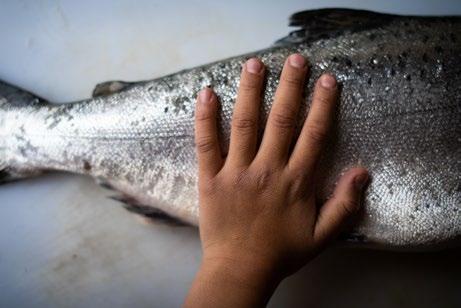
OUR COLLECTIVE VISION
Our network includes Tribal governments, community-minded organizations, local businesses, Alaska Native corporations, culture bearers, educators, state and federal agencies, and more.
We envision self-determined and connected communities where Southeast Indigenous values continue to inspire society, shape our relationships, and ensure that each generation thrives on healthy lands and waters.
For over ten years, SSP has worked to catalyze community-driven initiatives that improve the quality of life and resiliency of Southeast Alaskans
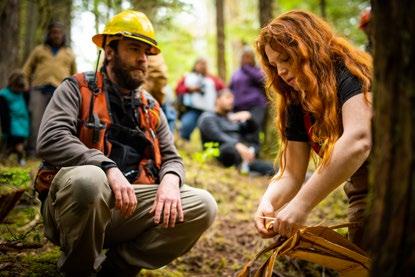


We work at the intersection of cultural, economic, and ecological well-being. SSP addresses complex social, environmental, and economic challenges through purposeful collaboration.
Our network is based on commitment across organizations and individuals to a common agenda, shared infrastructure, continuous communication, mutually reinforcing activities, and a shared measurement framework. Members of the network leverage their unique perspectives, expertise, experiences, resources and insight to catalyze on-the-ground initiatives that build cultural, ecological, and economic prosperity for our communities and region.

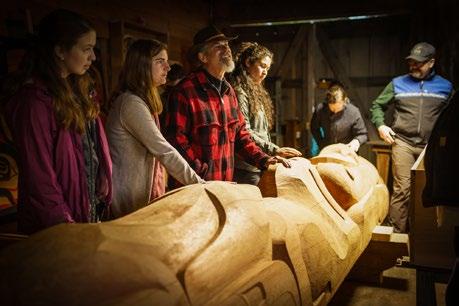
Relationships First
• Balance
• Tribal Sovereignty & Community Determination
• Kuxhadahaan.Adaayoo.analgein is Tlingit for “Stop, observe, examine, act”
• Intentional Collaboration
• Courage & Follow Through
• Growth & Collective Learning
• Systems Thinking
• Justice & Healing









The Steering Committee







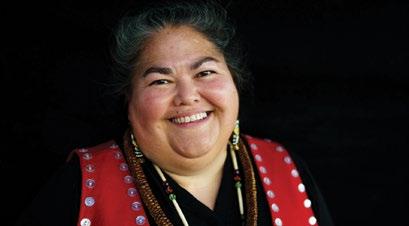








 SPRUCE ROOT
THE NATURE CONSERVANCY
SPRUCE ROOT
SPRUCE ROOT
THE NATURE CONSERVANCY
SPRUCE ROOT






Program Director

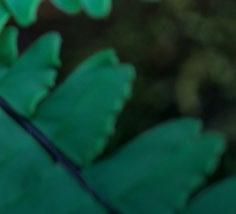



Marina Anderson
Spruce Root | Prince of Wales, AK MARINA@SPRUCEROOT.ORG
Hello! I am the Program Director for the Sustainable Southeast Partnership. I am also on the SSP Steering Committee that meets regularly to offer guidance, direction, strategy and vision to the Partnership. I am Haida and Tlingít from Prince of Wales Island. My Haida Clan is Gaw Kiiwas (Raven/Owl/Flicker/Killer Whale/Grizzly Bear) and my Tlingit clan is Taakw.aaneidi (Raven/Sculpin). At a young age I got started in tribal politics by growing up with the Alaska Native Sisterhood where I learned from the elders around me. Outside of work I spend time out on the land and water harvesting traditional medicines and foods to share with my community.

Vision, Leadership & Strategic Direction
The Program Director is responsible for preparing and overseeing annual SSP budgets, providing support to all SSP Catalysts and partners, tracking progress and performance, and building overall capacity for triple-bottom-line community development. Representing a diverse network of individuals and organizations, this role is essential to driving the collective vision and implementing the strategy of our collective impact network.

• Leading the Development of the Vision and Strategy
• Overseeing the Implementation of Programs, Activities, Budgets, and Agreements of the Network
• Leading Expansion Efforts
• Building Overall Capacity of Partnership, Members, and Programs
• Facilitator and Organizer of SSP Retreats, Gatherings, Events, and Work Groups
• Lead Ambassador of SSP Values
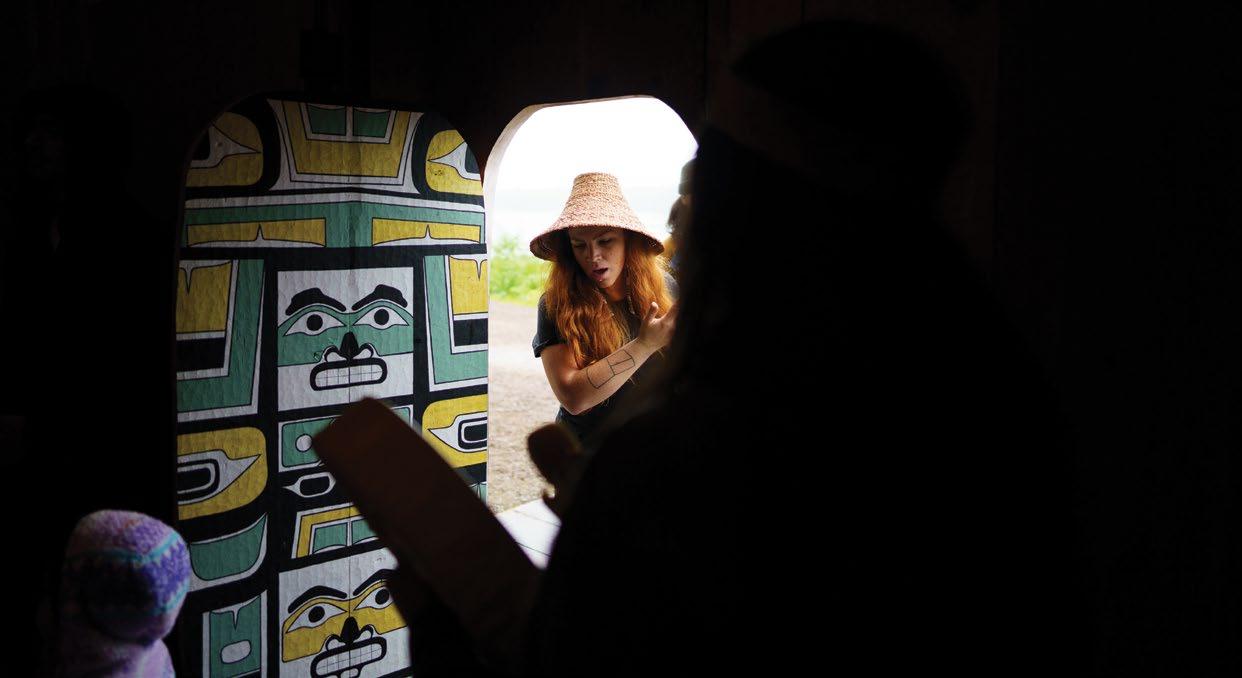
PROJECT SPOTLIGHT

In Service to Our Communities and Collective Values
As the SSP Program Director, my work is driven by, identified by, and led by our communities. In the Partnership we work to shift more agency, authority, and governance into the hands of the people who live, work, and thrive in Southeast Alaska. We recognize and honor that Tlingit, Haida, and Tsimshian Sovereignty transcends thousands of years. We invest in ourselves and each other and prioritize building the capacity of our communities through knowledge and skill sharing, apprenticeships, and formal programs. We cultivate this exchange across geographies, disciplines, and generations.


I work to ensure that our network continues to honor our communities and remains true to our collective values. I work to foster trust and meaningful relationships across the region while bringing resources, investments, and support to Southeast Alaska. At my core, I work to show up for my community whether that is by supporting Haa Tóo Yéi Yatee Culture Camp in Hunna or by sticking a bunch of sticky notes on a wall that help us set priorities and realize our vision




Deputy Director

DEPUTY DIRECTOR
Shannon Stevens
Spruce Root | Haines, AK SHANNON@SPRUCEROOT.ORG
I believe in the importance of pursuing pathways for development that bring together traditional Alaska Native values with a pursuit of sustainability, and strive to play a meaningful role in helping shape this work and building this future. My professional background includes over a decade in the media industry, growing teams, creating custom solutions, engaging with partners, and implementing strong project management workflows to keep projects on track and on budget. I hold a graduate degree in International Business, and have studied economic development around the world. Today, as a resident of Haines, I serve on the Southeast Alaska State Fair Board of Directors, and volunteers as a radio host at KHNS serving Haines, Klukwan and Skagway.

Building Our Collective Capacity
The Deputy Director supports the Program Director in strengthening Catalyst and Partner organization capacity, growing the network, streamlining organizational processes, and ensuring that initiatives undertaken by SSP help achieve our goal of integrating Indigenous cultural values and a triple-bottom-line framework of economic, social, and ecological sustainability.

PROJECT AREAS
• Strategic Partnership Growth
• Triple-bottom-line Community Development
• Annual Catalyst Work-Planning & Goal Setting
• Consistent Partner Communication
• Track SSP Progress & Support Metric Collection & Reporting
• Capacity Building for Partners & Network

PROJECT SPOTLIGHT
Strategic Indigenous Guardians Planning in Yakutat
I’m excited this year to be joining the project team to partner with the Yakutat Tlingit Tribe (YTT) to develop a five-year strategic plan for YTT’s Indigenous Guardians Program. We are honored by the opportunity to support the Tribe in this important initiative to empower guardians to actively manage and monitor ancestral lands and waters.
For this project, I serve as Project and Facilitation Support and will lead logistics and communications, support research and analysis, and support facilitation of visioning, goal setting, and other inperson meetings.
The reason we provide these services is two-fold: first, the processes create space for Indigenous voices to be amplified and for decision making in our region to be Indigenous-led; second; it improves our ability to meet our mission as we are able to support the development and the implementation of Tribal and community strategies. Through our role in the SSP, we are well suited to bring additional capacity and resources to the partner organizations that collaborate regularly through the network.





Seacoast Trust


 Kaylah Duncan
Kaylah Duncan
Spruce Root | Juneau, AK
KAYLAH@SPRUCEROOT.ORG
I lead fundraising efforts for Spruce Root and the Seacoast Trust, empowering the Sustainable Southeast Partnership (SSP) to drive a regenerative economy in Southeast Alaska. I am Tlingit and a child of the Dakl’aweidí clan. I carry the name S’eiltín and was raised in the territory of the Áak’w Kwáan (Tlingit communities of the Auke Lake region). My past experience as the SSP Regional Communications Catalyst has deepened my commitment to advancing the well-being, economic prosperity, and Indigenous stewardship of our lands and communities. I am eager to contribute to impactful initiatives that benefit both people and the environment.


Changing Conservation Finance
By centering Indigenous values and selfdetermination, the Seacoast Trust represents an innovative and long overdue shift in conservation finance that has tremendous potential to drive systemic change benefiting both people and nature. The Seacoast Trust will, in perpetuity, reduce barriers to the communities of Southeast Alaska in achieving their goals for the future amid the life-sustaining health of the lands and waters that now, more than ever, call for our shared efforts.

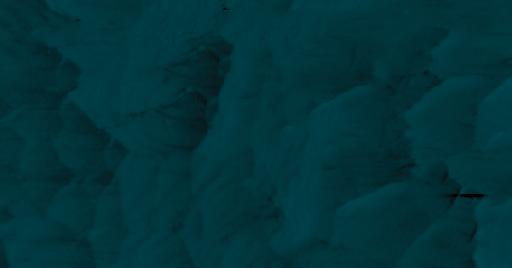
$100M Long-term goal
$65M 2025 goal


• Respect Community Voices & Uphold Indigenous Governance & Leadership
• Envision the Next 100 Years by Planning with the Next Generation
• Balance Economic, Social, & Environmental Wellbeing
• Collaborate with Empathy, Generosity, & Purpose
• Value the Integrity of all Knowledge Systems, Including those Anchored in 10,000+ Years of History, Stewardship, & Traditions

$23.1M Current value


Supporting the Seacoast Trust
The investments of Seacoast Trust, guided by a fully Indigenous committee of investment experts and community leaders, are grounded and aligned in Indigenous values. Annual earnings will fund a different kind of conservation: One that understands people and communities are inseparable components of a healthy environment, and that thriving rivers and forests require mechanisms that shift power and resources to the people living in the region.
As of December 2023, the Seacoast Trust’s market value was $23.1M. We are now working towards our next goal of $65M to fund the estimated $3.2M SSP budget in 2025. Our longterm goal is to reach a fully funded Seacoast Trust of $100M.









Angoon Community Catalyst





Carmen Davis
Kootznoowoo Inc.
CDAVIS@KOOTZNOOWOO.COM
I am Tlingit from the Deisheetaan Clan. I moved back to Angoon in 2012 where I began working for the Tlingit & Haida HeadStart program and later for Chatham School District where I spent 7 years as a para educator. I am an outdoor enthusiast and an artist at heart. You will always find me walking, hiking, foraging or working on a project. I love learning about herbal medicine, gardening, preserving and all things off-grid. I feel very fortunate to live in such a beautiful place full of rich culture and history. I hope to make some meaningful contributions as Angoon’s Community Catalyst and form good working relationships with our wonderful partners. It’s an honor to work with such a great group of people.

Aangóon Angoon
Angoon is home of the Bear Fort people, Xootznoowoowe’di, and the gateway to Admiralty Island National Park. There are approximately 350 residents year-round with a little more during the summer months. We are a small Tlingit village along the beautiful Chatham Straight where many of our people live a subsistent lifestyle. Nestled in the heart of the Tongass national Forest Angoon offers an incredible variety, with history, fishing, insight into our Tlingit Culture, and breathtaking views.

• Developing Sustainable & Regenerative Tourism Opportunities
• Supporting Indigenous Artists
• Catalyzing a Teen Center at the Alaska Native Brotherhood Hall
• Natural Resource Protection & Stewardship
CORE PARTNERS
City of Angoon, Allen Marine, Chatham School District, Spruceroot, Angoon Community Association, USDA Forest Service


Holistic Development


We are working to develop regenerative visitor opportunities in and around Angoon that can provide living wage employment opportunities for residents, protect natural resources, and honor the values and way of life of our community. Being able to support and encourage local Indigenous artists to use, teach and showcase their art in the newly renovated artist’s studio is a major accomplishment. We hope to increase use with more artists, visitors and community members. We continue to work with Kootznoowoo, Inc. and partners to develop a Co-management Agreement for the Mitchell Bay watershed which would improve local authority over how this critical watershed will be managed. The health of our local lands and waters is an integral component to a healthy community. The newly granted Thayer Hydro Project in Angoon will support access to reliable and affordable energy for the community as well as deliver new economic opportunities. Our goal with this will be to train and employ as many locals as we can for the upcoming jobs.










Chilkat Valley Community Catalyst




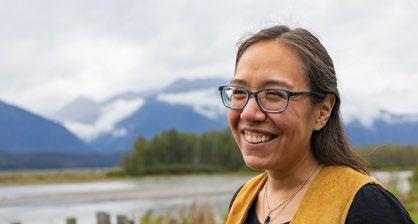 Katrina Hotch
Katrina Hotch
Jilkaat Kwaan Heritage Center
KHOTCH@CHILKAT-NSN.GOV
I am extremely grateful to have grown up in the Chilkat Valley and to be working in Klukwan. The community fostered strong foundational roots in our subsistence way of life, song and dance, arts, and language. While at the University of Alaska Southeast to obtain my BLA I was able to further my studies in our history, Lingít Yoo X’atángi, and Northwest Coast Arts: Formline, Carving, Basketry and Woolen Weaving. I enjoy work that promotes cross cultural understanding and supports folks by increasing access to traditional knowledge through the development of programs and resources.

Tlákw Aan | Deishú Klukwan and Haines
The community of Haines and the surrounding area, including the village of Klukwan, are home to more than 2,500 Alaskans. The community supports an array of vibrant local businesses and industries and many people live a subsistence lifestyle based on the salmon, berries and wild game, such as moose. Klukwan is a small village on the banks of the Chilkat River. Klukwan is taken from the Tlingit phrase “Tlakw Aan” which means “Eternal Village,” or “The Village That Has Always Been.”

• Food Sovereignty & Security
• Increasing Opportunities in Traditional Skill Learning Including Northwest Coast Arts and Subsistence Foods
CORE PARTNERS
Audubon Alaska, Chilkat Indian Village, Klukwan Community & School Library, Chilkoot Indian Association, SEARHC, ANS Camps 5 & 8, ANB Camps 5 & 8, Ecotrust, Haines Economic Development Corp., Haines Victory Garden


Cultural Programming
We are renewing our efforts in cultural programing post pandemic starting with three main focuses in Lingít Language, Medicinal Plants and Northwest Coast Song & Dance. These subjects also align with upcoming programing with our long term partner the Klukwan Community and School Library.

We have worked together on a variety of workshops and cultural documentation projects. We hope that these upcoming programs will aid in the transmission and preservation of our traditional knowledge as well as foster the sense of community.





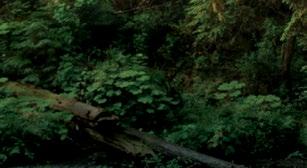


Craig Community Catalyst
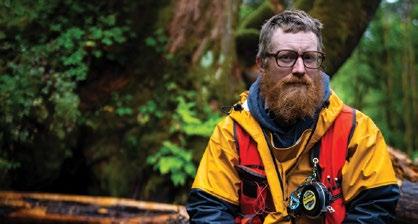 Quinn Aboudara
Quinn Aboudara
Shaan Seet Inc.
QABOUDARA@SHAANSEET.COM
I am lifelong resident of Prince of Wales Island. As a Community Catalyst, I am about as local as you can get. I coordinate and oversee the Klawock Indigenous Stewards Forest Partnership working closely with local partners to develop their capacity. I have a background in fisheries and forestry as a lifetime commercial and subsistence/traditional harvester and served in the Marine Corp for four years. Having seen a lifetime of logging and the various impacts of it, stewarding the lands and waters of Southeast Alaska is of great importance to me. Once a Sustinable Southeast Partnership Steering Committee member, I have been with SSP since 2016 catalyzing projects all across Prince of Wales Island.
 Sháan Séet Craig
Sháan Séet Craig
Craig is the largest town on Prince of Wales Island with a population of over 1,000 people, this makes it the centerpiece of the island for transportation, commerce, government, and tourism. Tlingit and Haida peoples traditionally used Craig and its surrounding area for its rich seafood resources and still do to this day. Commercial fishing is Craig’s main economic driver today with its robust salmon runs, especially King salmon. In addition to salmon, shellfish and groundfish harvest put Craig among the top 100 fishing ports in the United States.

• Klawock Indigenous Forest Stewards Partnership
• Alaska Youth Stewards
• Annual Firewood Distribution
• Wilderness & Stream Restoration
• Co-management with USDA Forest Service
CORE PARTNERS
Sealaska, USDA Forest Service, Southeast Alaska Watershed Coalition, US Fish & Wildlife Service, Tlingit & Haida, Craig Tribal Association, Organized Village of Kasaan, Klawock Heenya Corporation, Klawock Cooperative Association, Prince of Wales Tribal Conservation District, Sitka Conservation Society
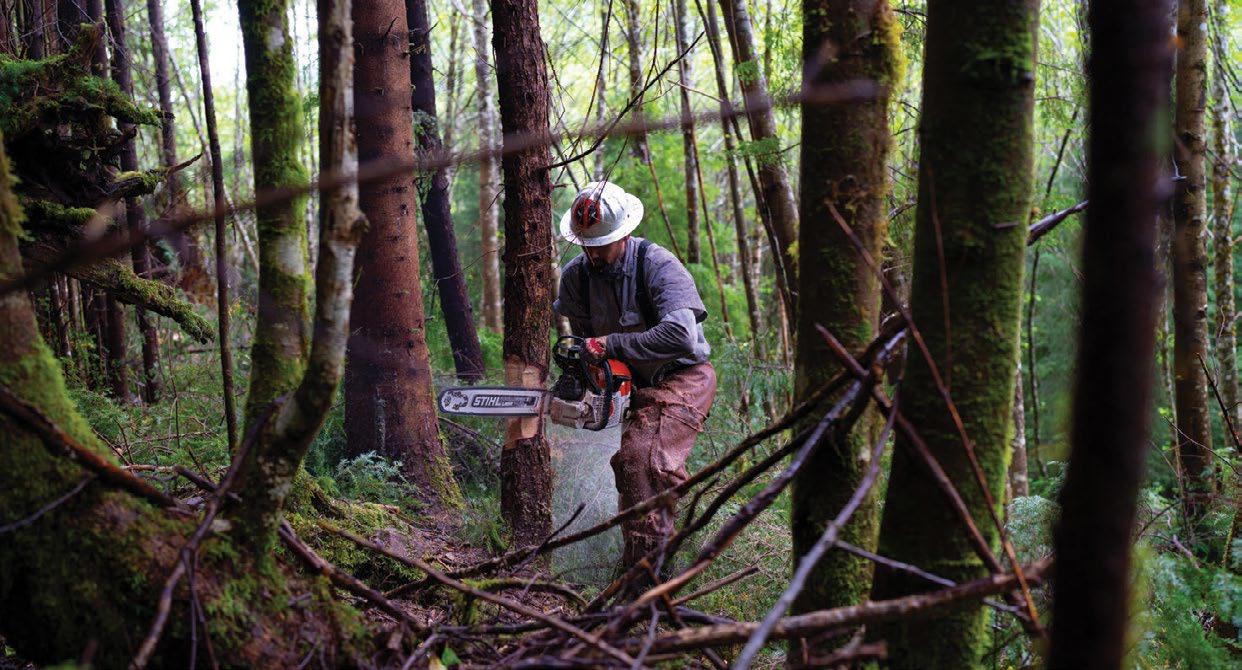
PROJECT SPOTLIGHT

Klawock Indigenous Stewards Forest Partnership
Formed in 2021 using Southeast Alaska Sustainability Strategy (SASS) funding, the Klawock Indigenous Stewards Forest Partnership (KISFP) is a science-based, landscape scale, community forest approach to long term sustainable watershed planning and project implementation whose overall goal is to achieve a measurable, resilient blend of timber, salmon, and deer production, other natural products, local economic diversification, and improved watershed health.
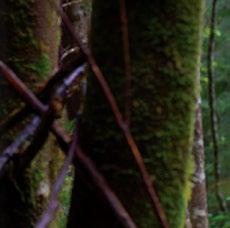

The KISFP project area is approximately 282,466 acres and consists of entire watersheds. This area also supplies municipal drinking water to the City of Klawock and City of Craig. The KISFP combines highly inclusive collaboration, state of the art land management tools, and an innovative watershed-scale planning approach for balancing economic, social and ecological outcomes. KISFIP places heavy emphasis on cultivating and empowering traditional ecological knowledge and practices.
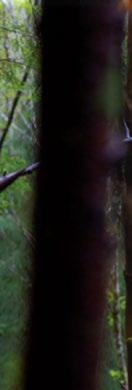
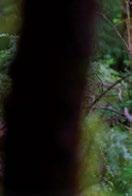





Hoonah Community Catalyst

Ian Johnson
Hoonah Indian Association
IAN.JOHNSON@HIATRIBE.ORG
Ahoy! I am a Maine-esostan (Minnesotan Mainer) turned Alaskan. I moved to the incredible community of Hoonah in early 2016 after completing an interdisciplinary Masters in Wildlife Biology and Conservation through the University of Alaska Fairbanks. I live an enchanted life here because I love the diversity, satisfaction, community-benefit, and partners of my job. I am addicted to the subsistence lifestyle, adventure access, and available wilderness of the Hoonah Area and I have the privilege to be immersed in the Tlingit culture and incredible history of this place. I operate the Environmental department at HIA which includes leading the Hoonah Native Forest Partnership.



Hoonah, Alaska on Chichagof Island is the largest Tlingit village in Southeast Alaska. The Huna Tlingit are descendants of the original inhabitants of Glacier Bay who migrated to Hoonah following a significant glacial advance that destroyed their traditional villages and summer camps within the Bay. Today, this community of nearly 800 enjoy a proud cultural identity and thriving cruise-ship and commercial fishing industries.


• Beach Monitoring
• Phytoplankton and Shellfish Study
• Stream Monitoring
• Youth Workforce Development
CORE PARTNERS
Alaskan Youth Stewards, Sitka Conservation Society, Alaska Department of Environmental Conservation, Hoonah City Schools, U.S. Forest Service, Huna Heritage Foundation, National Parks Service



Now and through the next century, the lands surrounding Hoonah will provide abundant resources that support our culture, economy, and community. The Hoonah Native Forest Partnership (HNFP), which includes public and private landowners, promotes sustainable economic development, local workforce employment, ecological restoration, and resource management, with the goal of ensuring the conservation of fish, wildlife, and forest resources.

The HNFP crew juggles many different types of projects and work in a given season ranging from salmon stream restoration to road maintenance. One important element of their work is finding undocumented salmon streams across the Hoonah landscape. After walking streams through brush, over logs, past bears, and through young-and-old-growth for two summers, the crew identified 15 miles of streams with coho where they had not been documented before. These stream miles, now added to the State’s Anadromous Waters Catalog, enjoy increased protections.
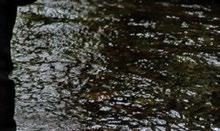








Kake Community Catalyst



Hank Copsey
Organized Village of Kake
SSP@KAKE-NSN.GOV
Hello! I have been living in Kake since I was 9. I went to college at Northwest Indian College in Washington state and achieved my Associate in Arts degree. A�er college, I moved back to Kake where I worked with Kake Tribal Corporation as a logger, log truck driver and road builder. Then I started working with the Organized Village of Kake where I have been working for the past 16 years. I am currently the Keex’ Kwaan Community Forest Partnership coordinator and I’m also part of the Comprehensive Economic Development Strategy (CEDS) Committee.

Nestled in Keku Strait on Kupreanof Island, sits the Tlingit village of Kake. Around 600 people are lucky enough to call this community with its inspiring landscape, unique history, and flourishing culture, home. Kake has a long history of living in balance with local lands and waters. Most people hunt, fish and sustain their families with foods gathered by hand.



• Road and Culvert Assessments
• Fish Mapping
• Fish Shocking and Tree Thinning in Kake and Hoonah
CORE PARTNERS
U.S. Forest Service, Sealaska Corporation, Natural Resources Conservation Service, Kake Tribal Corporatioon, Hoonah Native Forest Partnership, Klawock Indigenous Stewards Forest Partnership, Ecotrust, Sitka Conservation Society


Stewards of Lands and Streams
The Keex’ Kwaan Community Forest Partnership (KKCFP) is an Indigenous led stewardship program in Kake, Alaska that is bringing together community and regional organizations to collaboratively steward the homelands of the Kake people.

The KKCFP crew have learned about forest and stream restoration with partners in Klawock and Hoonah. They also completed a saw training with the USFS in Petersburg. The crew has conducted road and culvert assessments, fish mapping, fish shocking and tree thinning in Kake and Hoonah and partnered up with the Alaskan Youth Stewards. They are excited about a project on Kuiu island doing a stream restoration project with hand tools and heavy equipment









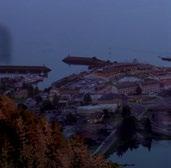


 Chandler O’Connell
Chandler O’Connell
Sitka Conservation Society CHANDLER@SITKAWILD.ORG
Hello! I use she/her pronouns. I am deeply grateful to have been born and raised as a guest on Lingít Aaní. I spend my days with my children and our extended family and friends. Before returning to Sitka in 2016, I worked in Burundi and Rwanda as a Global Health Corps Fellow and then at One Acre Fund, a social enterprise committed to ending hunger and poverty by serving smallholder farmers. As the Sitka Community Catalyst, I spent my days collaborating with my neighbors to try and build a better, more equitable community now and for future generations. I support a variety of citizen-led initiatives that connect with food security, Indigenous sovereignty, workforce development and climate change.

PROJECT SPOTLIGHT
Pacific High Garden
Sitka Conservation Society is a proud partner of Pacific High School’s (PHS) Farm to Table Program, which provides experiential education in culinary and agricultural sciences. Their fromscratch, student-made meals classes integrate student-grown produce from the school farm, feeding youth fresh, organic, local foods, improving their food security, while building skills for the next generation of community leaders. In 2023 the farm produced over 270 pounds of organic, local, fresh produce, plus 119 bulbs of garlic, 212 bulbs of shallots and lots of fresh herbs.


In 2023, SCS raised over $150,000 to support the program, including funds to help complete the new 24’ x 36’ Farm greenhouse featuring locally harvested and milled yellow cedar garden beds and funds to maintain the critical Garden Coordinator position. The Community Catalyst also worked to recruit volunteers and coordinate tours of the Farm to Table programs for policy makers, funders, and staff from nonprofit and government agencies to provide reciprocal learning opportunities.
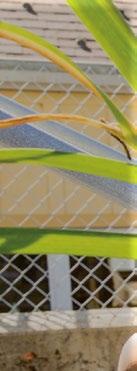

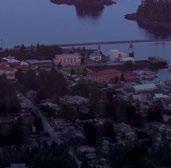

Sitka Community Catalyst



Sitka is a Lingít community on the outer coast of Baranof Island. Sitka is home to just under 9,000 year-round residents with an economy, like the region as a whole, reliant on commercial fishing, tourism, and government jobs. Sitka is nestled in the Tongass National Forest where families practice their culture, fish, hunt, gather foods, hike, play and find inspiration.


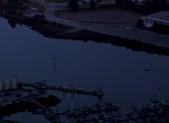

• Beneficial Electrification
• Place Based Education
• Food Security & Soverignty
CORE PARTNERS
Alaska Heat Smart, Alaska Native Brotherhood Hall, Central Council of the Tlingit & Haida Indian Tribes of Alaska, Pacific High School, Sitka Carbon Offset Fund, Sitka School District, City & Borough of Sitka, Sitka Tribe of Alaska






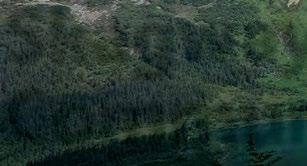


Skagway Community Catalyst





Jacob Watson
Skagway Development Corporation PROGRAMMANAGER@SKAGWAYDEVELOPMENT.ORG
Hi! I grew up in Massachusetts before moving to Southeast Alaska in 2014. I immediately fell in love with the people, nature, and culture in the area.
I’ve worked in the tourism industry in Skagway ever since, most recently as a Dock Ambassador for the Municipality of Skagway. I enjoy writing and performing music, hiking, camping, and volunteering for various community events. As the Skagway Community Catalyst, my focus is on economic development, promoting regenerative tourism, watershed stewardship, and community outreach. I am privileged to work with my neighbors to foster positive growth in our community and build a more sustainable future for all.

Shgagwéi Skagway
Skagway is a community of about 800 yearround residents. The summer population grows substantially with the arrival of seasonal workers. Shgagwéi, meaning “heartwood place” or “a windy place with white caps on the water” was traditionally used by the Chilkoots and Chilkats for hunting and fishing. Today, the Skagway Village operates as the Skagway Traditional Council. Tourism is the biggest industry in Skagway, with over 1.7 million total visitors in 2023 alone.

• Watershed Stewardship
• Economic Development
• Workforce Orientation
• Community Outreach
CORE PARTNERS
Skagway Traditional Council, Audubon Alaska, Southeast Alaska Watershed Coalition, Skgway School District, Skagway Development Corporation
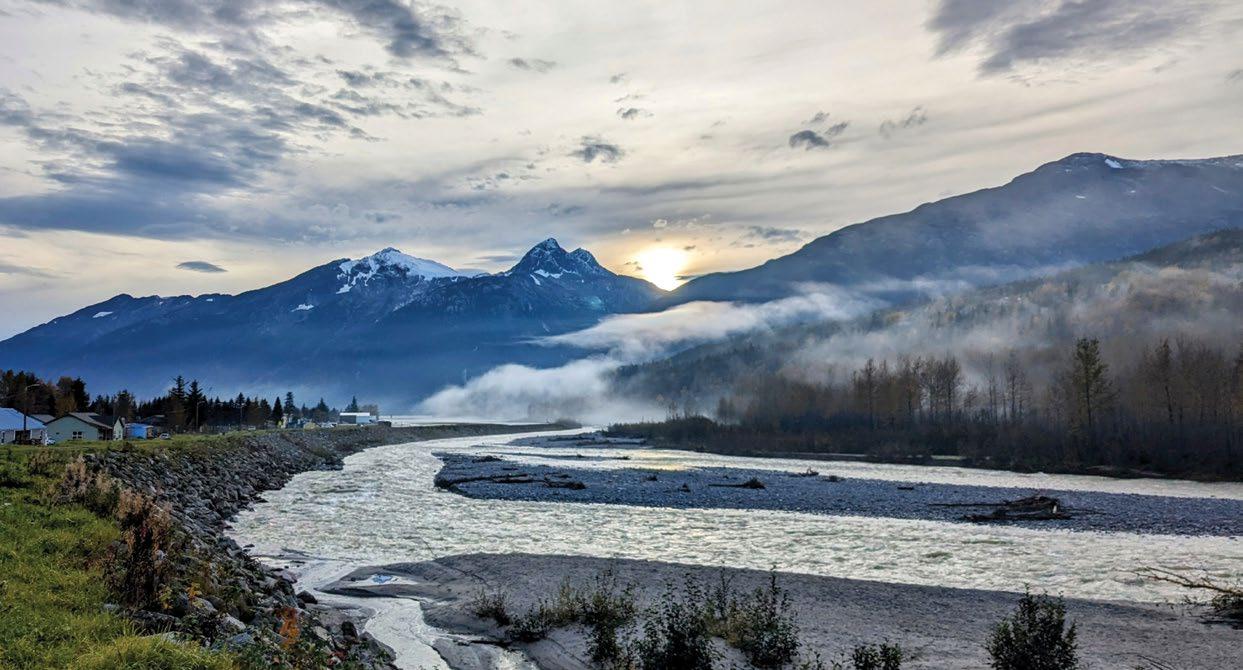
PROJECT SPOTLIGHT

Welcome to Shgagwéi
Seasonal Workforce Orientation
Welcome to Shgagwéi is a series of events designed to aid seasonal workers in acclimating to their new environment and understanding their role in the community. Event topics include safety training, healthcare, networking, culture and customs, history lessons, and an introduction to local resources. These events are pivotal for facilitating a deeper understanding of job expectations and community integration while ensuring adherence to important safety protocols and guidelines.

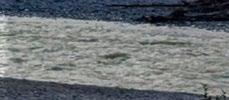
Additionally, the orientation provides an opportunity for seasonal workers to forge connections — fostering a sense of community amongst those who may be far from home. By making seasonal workers feel more at ease and informed, the orientation not only bolsters job performance and diminishes turnover, but also yields mutual advantages for both the workers and the community at large.

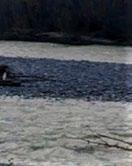




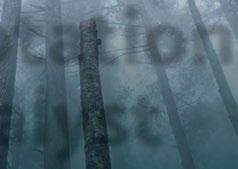
Climate Adaptation Regional Catalyst
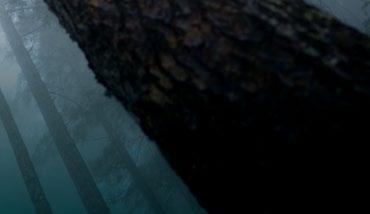


 Annika Ord
Annika Ord
Alaska Climate Adaptation Science Center
University of Alaska Fairbanks ALORD3@ALASKA.EDU
I grew up in a commercial fishing family in Southeast, spending summers living and fishing out of our remote homestead on the southern tip of the Chilkat Peninsula. I have a background in climate science, glaciology, ecology, and technical field support and have been exploring and sharing stories of climate change in Southeast for nearly a decade. Through academic research, professional experience, and place-based storytelling I’ve worked to bridge disciplines to better understand the impacts of climate change in Lingít Aaní. As we face the challenges of the climate crisis, I believe that effective climate resilience and adaptation initiatives must be rooted in community and supported by science.

FOCUS AREA
Climate Adaptation
Climate adaptation means harnessing and transferring the power of Indigenous Knowledge and Western Science between communities and individuals to move with greater intention together. It means helping communities develop their capacity for participating in and benefiting from climate science and adaptation actions, while coordinating the efforts of individuals and entities throughout the region.

PROJECT AREAS
• Incorporating Indigenous & Traditional Knowledge in Research, Planning
• Facilitating Communication and Equitable Knowledge Co-production Between Community, University, and Agency Researchers & Practitioners
• Navigating Sensitive Issues around Co-Production of Knowledge, Data Soverignty, and Information Control
CORE PARTNERS
Sealaska, Tlingit & Haida, Spruce Root, & more.


Welcoming Our Newest Catalyst
I will work on developing and implementing climate adaptation projects while making climate science actionable in support of community sustainability.

While serving as a liaison between the Alaska Climate Adaptation Science Center and Southeast Alaska communities, my primary responsibilities are to coordinate community climate adaptation needs assessments, projects, and initiatives, facilitating information exchange among communities, the university, and agency partners.





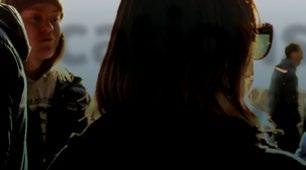
Communications Regional Catalyst


Shaelene Grace Moler
Spruce Root | Sitka, AK
SHAELENE@SPRUCEROOT.ORG
Hi! I am Tlingit of the Tsaagweidí from yak’s lits’eix̱i hít. I grew up in �éex̱’, Kake, but currently reside in Sheet’ká, Sitka. I have dual Bachelor of Arts degrees in English and environmental studies from the University of Alaska Southeast with an emphasis in creative writing. A lifelong storyteller, I have worked within the SSP network as an intern, fellow, and contractor the past few years and on a variety of stories, journals, publications and more across Alaska. I am thrilled to continue sharing inspiring stories from our communities across the region and beyond connecting our communities and partners.

Communication & Engagement
Southeast Alaska is the ancestral territory of the Tlingit, Haida, and Tsimshian peoples who continue to care for, steward, and honor the lands and waters that sustain all Southeast Alaskans. This is the largest remaining coastal temperate rainforest on the planet with 35 communities separated by islands and waterways. Communication between our communities and the stewards of this land is vital to the success and preservation of our lands, waters, people and culture, and to inspiring large-scale political, social and environmental change.




• Managing Emerging and Innovative Communications Projects
• Coordinating Communication Between Communities and Partners
• Social Media, Website, E-Newsletters & Outreach
• Communications Strategy Development
• Woven: Peoples & Place Magazine
CORE PARTNERS
Sitka Conservation Society, Sealaska Internship Program, & SSP


Partnership Communications & Beyond
The strength of our collaborative impact network is built on foundations of trust, respect, and reciprocity. We cultivate these relationships through effective communication channels that allow us as a region to stay connected, both internally and externally in the Sustainable Southeast Partnership.

Our communications must be rooted in mutual understanding in care for our work and the sharing of our projects, programs, stories and culture must be done so with care and intention. It is important we uplift voices across our communities, meeting leadership where it shows up across the breadth of our work. Sharing positive role models for people, places and organizations, innovative approaches to management, and inspiring and caring for the next generations are all foundational for Southeast Alaska’s future.


SSP meets monthly online and in person twice a year. We share resources, catalyze and forge relationships that bring us closer to our goal of a culturally, ecologically, and economically prosperous Southeast Alaska.


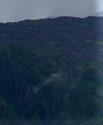


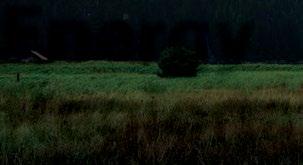

Energy Regional Catalyst


Clay Good
Renewable Energy Alaska Project | Juneau
CGOOD@REALASKA.ORG
Lingit Aani has been my home since 1967. Twenty five years teaching science in my hometown was a joy delivered in daily doses of student curiosity and inspiration. Now I’m excited to work as the SSP Regional Energy Catalyst and STEM Energy Educator. Whether exploring the nature of energy in Hydaburg classrooms or training Angoon students to tell their community’s energy story with drone video and mapping technologies or helping to plan a local electrifcation expo in Sitka or helping communities and utilities to plan for the benefcial electrifcation of their homes and businesses, these are exciting and important days as our communities strive for greater energy independence.

PROJECT SPOTLIGHT

Energy Independence
Our partners are committed to renewable energy solutions that are clean, reliable, affordable and sustainable. Energy costs are disproportionately high in our rural villages, threatening their economic health and well-being. Through education and awareness, we strive to reduce Southeast Alaska’s dependence on expensive outside energy by supporting local efforts to reduce costs and improve efficiency of existing energy resources for transportation, homes, commercial and public buildings.


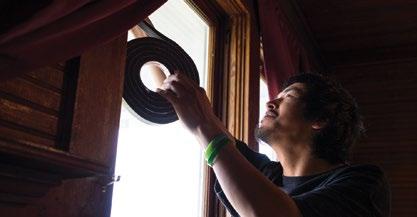
PROJECT AREAS
• Energy Efficiency
• Energy Education
• Beneficial Electrification
• Biomass Renewable Energy Development
CORE PARTNERS
Southeast Conference, Alaska Housing Finance Corp, Sitka Conservation Society, Cold Climate Housing Research Center, Tlingit Haida Regional Housing Authority, Alaska Center for Energy and Power, Alaska Energy Authority, AK HeatSmart, USDA Rural Development

Heating with hydroelectricity instead of oil, typically cuts home heating costs in half or more. The same is true for autos as Southeast leads the state and nation in adoption of energy efficient electric vehicles. Through partnerships, community outreach and education, SSP supports aggressive beneficial electrification measures to create greater energy independence and economic prosperity for the region.


Alaskans have been heating with biomass since time immemorial. Utilizing waste wood from harvest and forest thinning helps improve forest health, creates local jobs and displaces many hundreds of thousands of gallons of heating oil annually.
SSP works for a Just Transition in this period of energy transition, through education and outreach reaching more than 500 K-12 students and 400 adults across the region in 2023. Efforts include community gatherings, classroom visits, job and career fairs, and summer camps. Through partnerships, SSP involves and empowers individuals to make informed energy and economic choices about their homes and communities.
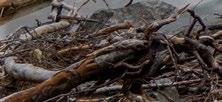








Food Security Regional Catalyst

Jennifer Nu
Ecotrust | Juneau, AK
JNU@ECOTRUST.ORG
Hi! Here on Tlingit Aani, I support projects and initiatives that engage Southeast Alaskans in strengthening place-based, healthy local food systems in their own communities. Food connects us to the land, to the ancestors and to each other. I believe that connections to the natural world and to community are key elements of living a good life. My most valued teachers are the friends and community members all across the state who have generously shared their skills and wisdom with me over the years. When I’m not foraging, preserving, or cooking, I also enjoy long-distance trekking, paddling, photography, and writing stories about people and community wellness.
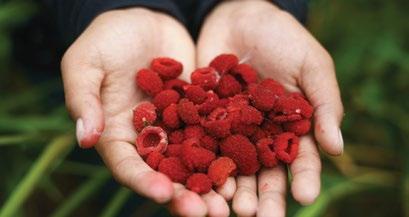
Food Sovereignty
The food we eat is not only important to the nutritional health of our Southeast Alaskan communities, our food is part of our identity. Our partners work to forge resilient food systems that decrease dependence on outside sources, eliminate waste streams, promote knowledge and skill sharing networks, support tribal food sovereignty, cultivate place-based food enterprises and improve household and community health.

• Regional Food System Networking
• Moby the Mobile Greenhouse
• Supporting Kayaaní (Plant Spirit) and Respectful Harvesters Network & Healing
• Regional Composting Network
CORE PARTNERS
UAF Cooperative Extension Service, Haa Tooch Licheesh, Alaska Food Policy Council,Kayaani Sisters, Spruce Root, U.S. ForestService, Tlingit & Haida and more

PROJECT SPOTLIGHT

Regional Composting Network
This Southeast Alaska Sustainable Strategy Initiative project develops a regional composting and food recovery network to facilitate regional learning opportunities between community leaders, composting practitioners, and educators from communities throughout Southeast Alaska.


Many communities are also facing higher costs for transporting solid waste via barge to the contiguous United States. Increasingly, communities are recognizing the value of reducing, recovering, and composting food waste into valuable soil. Compost leaders in nearly every community are dedicated to innovating systems that fulfill this critical missing link in the cycle of regenerative food systems. The vision is to make composting easy, available, and accessible for residents and businesses. Composting empowers people of all ages and backgrounds to be directly involved in stewardship while at the same time contribute to local food systems.

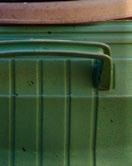





Healing Regional Catalyst


Jamiann S’eiltin Hasselquist
Haa Tóoch Lichéesh | Juneau, AK
JAMIANNH@AWAREAK.ORG
I am Tlingit from the Deisheetaan Clan (Raven/ Beaver/Dragonfly) and belong to the Ravens Bones House (Yéil S’aagi Hit) of Angoon, born and raised on the ancestral homelands of the Áak’w Kwáan at Dzantik’i Héeni, Juneau. I am the mother of two sons, grandmother to two grandsons, and a caretaker of two cats. I am a member of the Juneau Tlingit & Haida Community Council, and the Alaska Native Sisterhood Camp 2 and participate in a Alaska Childrens Trust lived experience group, and am one of four Alaska Natives participating in the Rx Awareness campaign with the Centers of Disease Control. I enjoy helping others cultivate healthy healing relationships between Indigenous and non-Indigenous organizations while working toward breaking generational cycles and colonial ways of thinking.

Healing
Healing is a community responsibility to come together for, focusing on lateral kindness. This includes promoting an understanding of what lateral oppression looks like—what those behaviors are, and how they’re often rooted in white supremacy culture. Healing ourselves helps us heal each other. Healing includes cultural activities like Lingít language, ocean dips, plants as medicine, social emotional teachings, lateral kindness campaign and workshops, healing relationships and more.
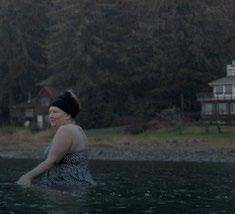


• Plants as Medicine
• Healing Relations
• Orange Shirt Day
• Cleaning of Cemetaries
• Language Revitalization
CORE PARTNERS
Tlingit & Haida, Spruce Root, Association of Alaska School Boards, Full Service Community Schools, the Nature Conservancy, and more
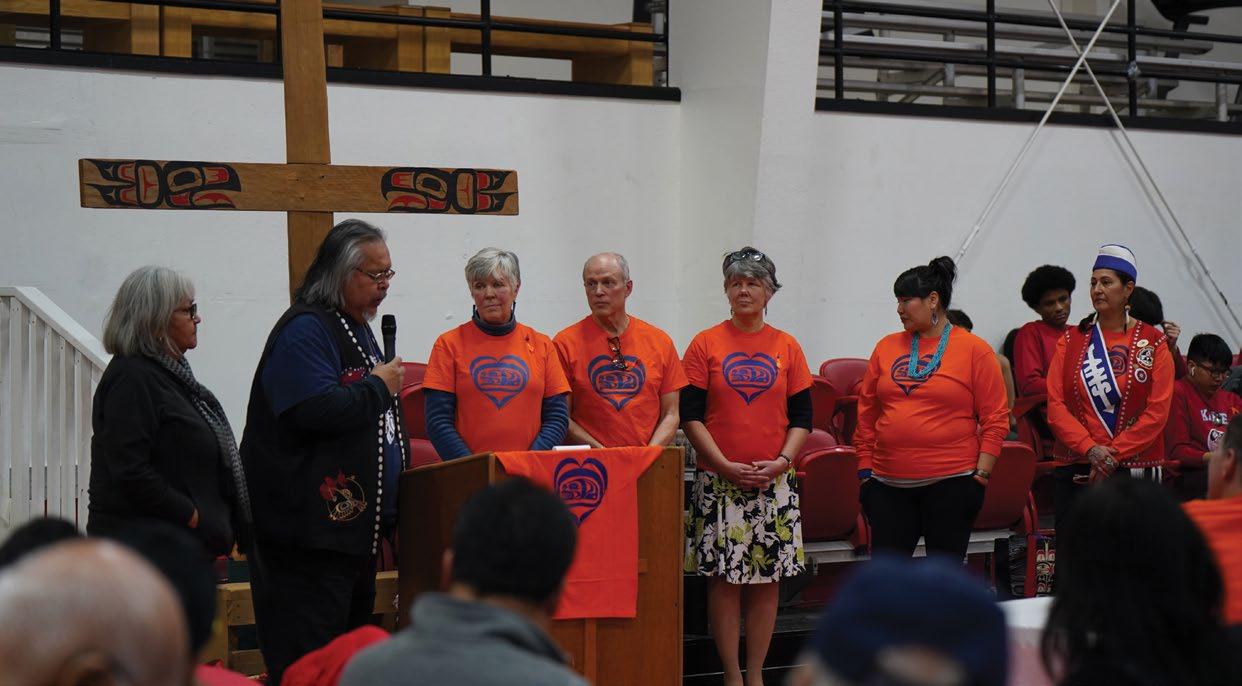

A Center for Healing in Kake
I attended the Sierra Cascade yearly meeting in Portland, Oregon and shared about the Quakers Friends mission schools in both Douglas Island and Kake. In my cemetery recovery and clean up work, I learned about these mission schools and formed healing relationships with a group of Alaska Quakers Seeking Right Relations (AQSRR) who introduced me to some of the descendants of these mission school institutions. This formed a path for us to learn about each other and walk better together.
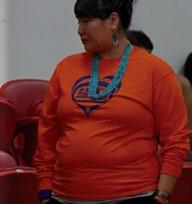


I shared at that meeting the plans for a healing center in Kake, an idea by the Organized Village of Kake’s President Joel Jackson. The healing center is for people around the region, and it will incorporate traditional practices and ways of healing. The Quaker descendants pledged $75,000 which amounted to over $92,000 after donations to go towards the healing center.






Local Business Regional Catalyst
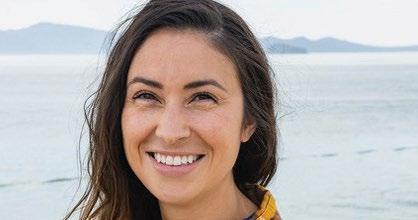
Brooke Leslie
Spruce Root | Wrangell, AK BROOKE@SPRUCEROOT.ORG
I carry the name Wooshkeeká. I am both Haida and Lingít. My Haida clan is Yakjaanas and I am grandchild of the L’uknax.adí, I am also Irish (Stokes) and a child of the Scottish clan Leslie. I was raised in the territory of the Shtax’ Heen Kwaan in the community of Wrangell. I grew up learning cultural and subsistence values from my parents and grandparents, and am now raising my daughter with these values. I attended the University of Idaho for Accounting and Musical Theatre. My passion for my culture led me back to Wrangell to learn from my late Grandfather and Lingít elder. Growing up in the family business that still operates in Wrangell today, small business has been a way of life for me.
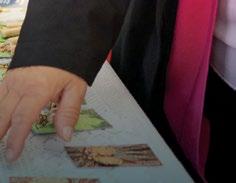



Rural Economic Development
Rural Economic development is catalyzing and supporting economic development activities in communities throughout Southeast Alaska ranging from regenerative tourism to outdoor recreation to cultural activities. My role is ultimately community work, uplifting Indigenous values and practices, building working and collaborative relationships between state and federal agencies, Tribes, local organizations, community catalysts, and more.



PROJECT AREAS
• Mariculture Liaison Work Through the Build Back Better Regional Grant Challenge
• Collaborating with Community Catalyst to Support Economic Development Projects in the Communities
• Rural Economic Development Monthly Hangouts
• Supporting Indigenous Lending Framework
CORE PARTNERS
Spruce Root, Southeast Conference, Juneau Economic Devopment Council, USFS, USDA, and more.

PROJECT SPOTLIGHT

Local Business Support
Building on the momentum of the Sustainable Southeast Partnership Hangouts, Brooke hosts monthly calls to move the needle on rural economic development in SE Alaska through working better together. Brooke also supports economic development projects being done by Spruce Root and our SSP partners throughout the region. The work she does is further exploring how we can catalyze Indigenizing the way we do business in Southeast Alaska and prioritizing people, place and planet in the way we evaluate profitability of projects.









Mariculture Regional Catalyst


Keolani Booth
Ecotrust | Metlakatla, AK KBOOTH@ECOTRUST.ORG
I was raised by my grandparents and am a member of the Tsimshian village of the Metlakatla Indian Community. Subsistence harvesting from my elders was woven into my life and I continue to practice these techniques as I harvest salmon, berries, wild game, and cedar for my community. I have been a commercial fisherman, harvest diver and Journeyman Carpenter for 25 years prior to starting my career in Civil Service.I am currently in 8th year as a councilman for the Metlakatla Indian Community. In recent years, I have served on Metlakatla’s Planning and Natural Resources Committee exploring mariculture as a sustainable economic driver for the region.

Kelp Science & Mariculture
Mariculture is the cultivation, restoration, or enhancement of marine species, in the ocean or on land. It is a tool that can be used to support access to traditional resources, for conservation, or for scaled commercial interests. Alaska has more coastline than the rest of the contiguous United States combined. There are ample opportunities to explore mariculture in ways that are equitable, sustainable, and driven by local priorities and values.



PROJECT AREAS
• Serving as a Liaison Between Communities and Industry
• Providing Assistance in Farm Trainings, State Permitting, and Funding
• Assisting Tribal Communities Build Infastructure and an Industry Workforce
CORE PARTNERS
The Native Conservancy, Southeast Conference, Alaska Mariculture Alliance, Tlingit & Haida, University of Alaska


PROJECT SPOTLIGHT
Alaska Natives in Kelp & Mariculture
The Balance between growing a sustainable economy and prioritizing regenerative subsistence values for Alaska Natives is imperative. Traditional knowledge implemented into the industry standard for mariculture is the only path forward that makes sense. I am working within my capacity with Communities and Tribal Leaders to not just encourage potential farmers in getting into the industry, but to address and pass on concerns and ideas while engaging communities as a whole.



Our oceans and its natural bounty are our Identity as Indigenous peoples and our connection to our Ancestors. Passing on a regenerative economy to our future generations that compliments our love for our oceans and our people is a mission I am proud to be a part of and I look forward to continuing this work.



Natural Resources Regional Catalyst

Bob Christensen
The Nature Conservancy | Lemesurier Island BOB.CHRISTENSEN3@GMAIL.COM
I work through the SSP on community-based natural resource projects that integrate social, ecological and economic values because I believe that the vitality and resilience of nature and its peoples go hand in hand. I am the sole proprietor of Living Systems Design, a consulting business based in Icy Strait that has been working to facilitate collaborative stewardship at home and abroad for about 25 years. I am proud to serve on the Leadership Team of the Rural Voices for Conservation Coalition so that I can learn from colleagues in my field, and share the lessons we have learned in southeast Alaska with a broader network of practitioners.

Community Fisheries & Forestry
The health and prosperity of our communities are inextricably linked to the health of our coastal rainforest. Our partners support sustainability-focused, community-driven stewardship. We work with private, state, and federal land managers to ensure local priorities, local employment, and Indigenous values, are paramount to the treatment of local lands and waters.

• Community Forestry Initiatives
• Alaska Youth Stewards
• Natural Resource Policy
• Workforce Development
CORE PARTNERS
Sitka Conservation Society, USDA Rural Development, USDA Forest Service, Economic Development Administration, Kake Tribal Corporation, Organized Village of Kake, Huna Totem, Alaska Venture Fund, Rural Voices for Conservation Coalition

PROJECT SPOTLIGHT
Keex’ Kwaan Community Forest Partnership
The Keex’ Kwaan Community Forest Partnership (KKCFP) is an Indigenous led program in Kake, Alaska that is bringing together community and regional organizations to collaboratively steward the homelands of the Kake people.
Work to date has focused on developing a comprehensive inventory and assessment of the forests, streams and roads on approximately 200,000 acres of lands on Kupreanof and Kuiu Island. We have developed a local crew to monitor conditions of the landscape and to do habitat restoration and sustainable development projects on the path to co-management.
Partners include the Organized Village of Kake, Kake Tribal Corporation, Sealaska Corporation, the City of Kake, The Nature Conservancy, the Natural Resources Conservation Serices, the U.S. Forest Service, Kai Environmental, Ecotrust and others.







Storytelling Regional Catalyst

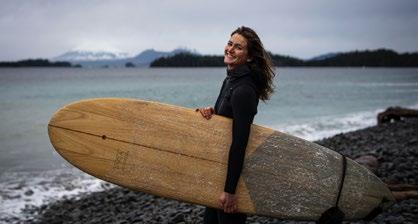
Bethany Sonsini Goodrich
Sitka Conservation Society | Sitka, AK BETHANY@SITKAWILD.ORG
I am passionate about the power of story for inspiring positive social change and am committed to inclusive processes that are driven by, and directly benefit, our communities. I am a proud first generation college graduate who holds a MSc in Biodiversity, Conservation and Management from the University of Oxford. I learned photography through a life-long apprenticeship with my mother and believe that the most beautiful images are created with intimacy and authentic love for the people and places pictured. My work has published in local and international publications including High Country News and TIME. I enjoy hunting, fishing, foraging, surfng, splitboarding, and processing all sorts of tasty wild foods with my family.

Storytelling for Change
As storytellers, we believe in the power of sharing our experiences, resources, ideas, and inspiration. By amplifying the voices of our communities and bridging the region with stories of change, we can build a more resilient and empowered Southeast. We work with community leaders, storytellers, local and national publications, and ambassadors of our values to create and share multimedia stories that inspire and activate Alaskans.





• Monthly Juneau Empire Column
• Storytelling & Engagement Internships
• USDA Southeast Sustainability Strategy Storytelling Support
• Dynamic and Strategic Storytelling Special Projects
• Woven: Peoples & Place Collective Impact Magazine
CORE PARTNERS
Juneau Empire, Sealaska, Edible Alaska, USDA Forest Service, Tlingit & Haida, & more


PROJECT SPOTLIGHT
Woven:
Peoples & Place





Launched in 2024, Woven is an annual publication available in print and online that helps convey the collective richness of the Sustainable Southeast Partnership and the impact it generates by weaving together stories, metrics, art, visuals, and community voices. Woven provides a multidimensional view of our efforts, serves as an annual chronicle and celebration of our progress, and help build ownership and pride in our Partnership.


Since 2021, we have hosted Sealaska internships in Storytelling and Outreach including Kaa Yahaayí Shkalneegi Muriel Reid and Shaelene Grace Moler who have transitioned into full-time positions with our Partners. Woven integrates the writing, photographs, and experience of those interns, with our wider storytelling team, Catalysts, and community members impacted by our programs.




Our Storytelling for Change program includes mentorship, monthly deep-dive stories of our regional and community work, Woven, and dynamic and adaptive projects and strategies for using storytelling as a tool to advance the mission, values and work of the SSP.






Workforce Development Regional Catalyst




Michael Mausbach
Spruce Root Community Development | Sitka, AK MICHAEL@SPRUCEROOT.ORG
I grew up on traditionally Coast Salish land in Washington State where I earned my undergraduate degree in global studies and international relations with a focus on diplomacy from The Evergreen State College. My research explored the relationship between political memory, conflict, and the development of regenerative tourism. I have been a guest here in Sheet’ka for the last decade and have experience in both the non and for-profit sectors managing business and grant programs centered on workforce and economic development. I currently serve as a project manager in workforce development with Spruce Root, as well as the regional catalyst in workforce development with the Sustainable Southeast Partnership.

Stronger Together
Each month, workforce development and career and technical education (CTE) professionals and stakeholders from across the region gather virtually to discuss program updates, funding opportunities, community & regional collaboration, and project acceleration.


Guest presenters representing industry, partner organizations, and educational institutions share knowledge and ask and offer time for partnership development and cross-organizational support. Partners in this work include Tribal governments, Alaska Native corporations, non-profits, schools and school districts, the University of Alaska system, State agencies, and Federal representatives.
Core members of this collaborative work have supported workforce development grant submissions, CTE intensives, rural hard skill training, career and job fairs, soft skills training, and culturally responsive career coaching and guidance initiatives. Workforce and CTE partners have even participated in exchanges with regional workforce actors across the State and supported Sealaska intern recruitment, university programming, and development opportunities for Community Forest Partnership crews and the Alaska Youth Stewards.
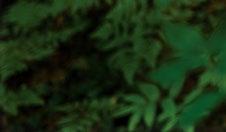


Workforce Development
We support place-based economies where locally-owned and operated businesses thrive, natural resources are used sustainably and our unique cultural resources are honored. We work to ensure that more money, more expertise, more job opportunities and more business leadership remains in our villages. We work to prepare Alaskans for regionally available and culturally meaningful job opportunities while cultivating leadership and professional development opportunities in the process.

• Career Coaching & Small Business Support
• Soft Skills & Work Readiness Workshops
• Alaska Youth Stewards
• Community Strategic Planning
CORE PARTNERS
Sitka Tribe of Alaska, City and Borough of Yakutat, Sealaska, Sealaska Heritage Institute, Tlingit & Haida, Alaska Youth Stewards, Alaska Association of School Boards, Prince of Wales Vocational Tech Center, Alaska Association of School Boards, POW Vocational Tech Center, Sitka Conservation Society







Youth Stewardship Regional Catalyst

Gabe Sjoberg
Tlingit & Haida | Juneau, AK
GSJOBERG@TLINGITANDHAIDA.GOV
Hi my name is Gabe! As the Regional Youth Stewardship Catalyst, I act as a conduit for community priorities, identify gaps in programming, and seek opportunities for youth stewardship in Southeast Alaska. Coordinated under Tlingit & Haida with the guidance of the Sustainable Southeast Partnership I support the growth and development efforts of local rural stewardship programs across the region with a primary focus of overseeing the Alaska Youth Stewards (AYS). I first came to Southeast as an AYS crew leader in Angoon and am honored to have the opportunity to be supporting the AYS program in a different capacity and continue to deepen my connection with these vibrant communities and the lands and waters that surround them.




Fostering Youth Leadership
Our partners support the stewardship of local lands and waters by bringing young leaders into the forest and on the water to conduct research, execute community priorities like trail building, gather wild foods to share with elders and participate in community-forestry. We invest in the health of our cultures, food systems, and livelihoods in Southeast Alaska for generations to come.



• Supporting the Alaska Youth Stewards through Funding, Training, and Relationship Building
• Collaborate with Netework to Develop Continued Opportunities for Youth
CORE PARTNERS
USDA Forest Service, Sealaska Corporation, National Forest Foundation, Hoonah Indian Association, Organized Village of Kake, Chatham School District, and the Prince of Wales Vocational & Technical Education Center
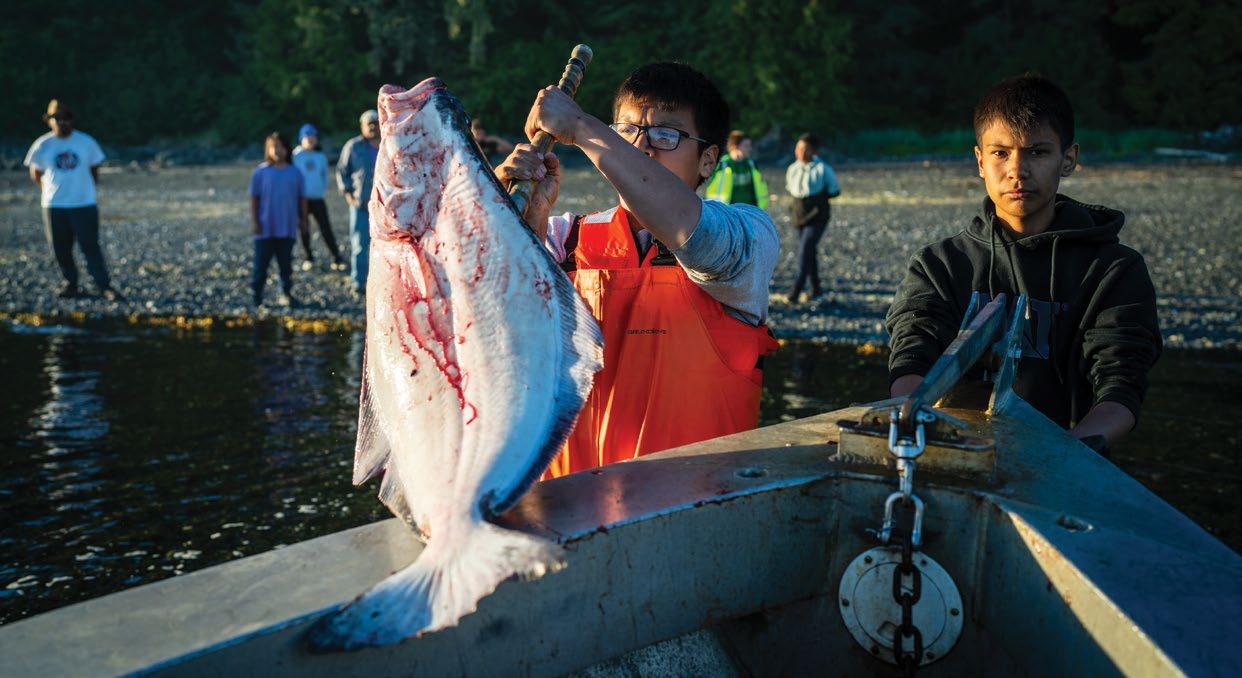
PROJECT SPOTLIGHT

Alaska Youth Stewards
Gabe oversees the Alaska Youth Steward (AYS), a program that is led by a strong network of partners. AYS nurtures a new generation of environmental leaders to actively contribute to community well-being, restoration, and resilience in the face of environmental changes. As an employment program for rural and Indigenous youth of Southeast Alaska, AYS offers place-based on-the-job experiential education and training to care for our lands, waters and communities.


Participants have the opportunity to work alongside professionals and experts from around the region and are exposed to a breadth of experiences that are determined by the needs of their communities and the resources of community partners. This allows for shared generations to engage in meaningful activities that work to restore Native lands, protect culture, provide opportunities to grow skills, generate income, and work together towards a collectively built, sustainable future.


Alaska Youth Stewards is Indigenous-led and empowers our communities to reclaim management of their homelands by strengthening community autonomy, selfdetermination, and sovereignty in our region. In the 2024 season, AYS will serve out of four communities within the region: Angoon, Hoonah, Kake and on Prince of Wales Island.

